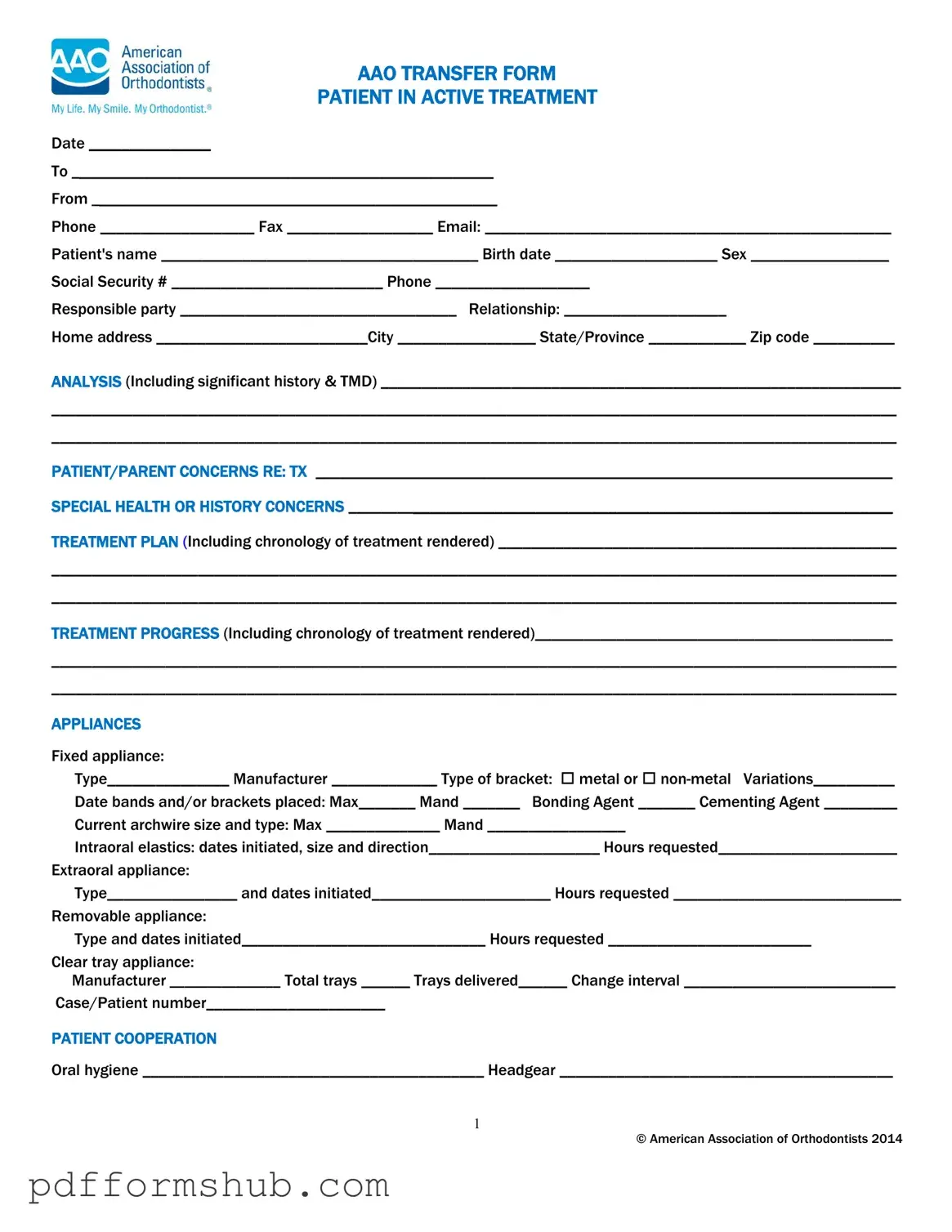The Aao Transfer form plays a crucial role in ensuring a smooth transition for patients undergoing orthodontic treatment. This form is designed to facilitate the transfer of important medical records from one orthodontist to another, making it easier for the new provider to understand the patient’s history and treatment plan. Key sections of the form include patient information, treatment progress, and any specific concerns the patient or their guardians may have. It also outlines the treatment plan and progress, detailing the appliances used and the patient’s cooperation levels. Financial details are included, highlighting any outstanding balances or fees associated with the transfer. Additionally, the form emphasizes the importance of timely record transfers to maintain continuity in care. By completing this form, patients can ensure that their new orthodontist has all the necessary information to continue their treatment effectively and efficiently. This process not only aids in the patient's ongoing care but also helps to set clear expectations regarding potential changes in treatment costs and policies.
